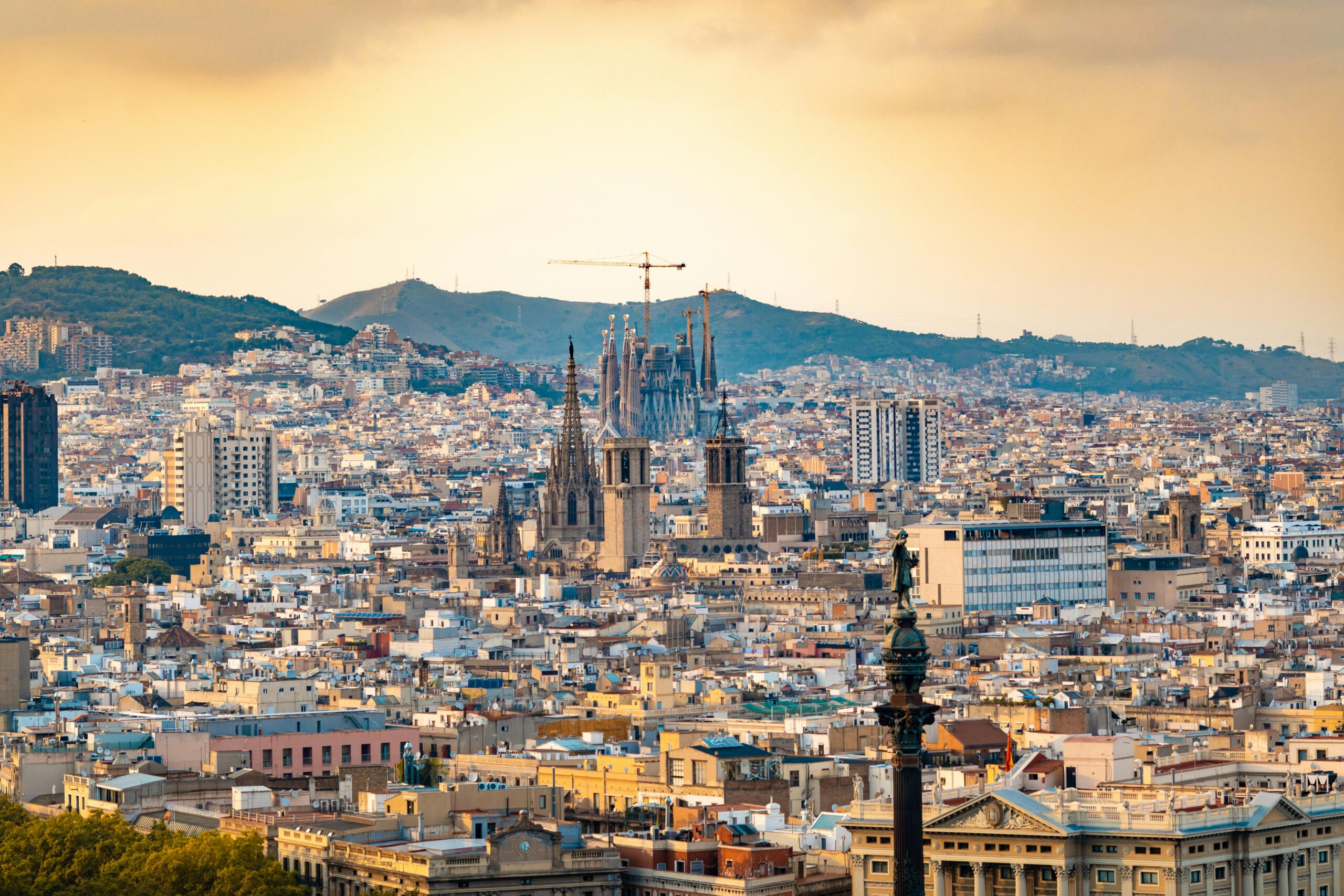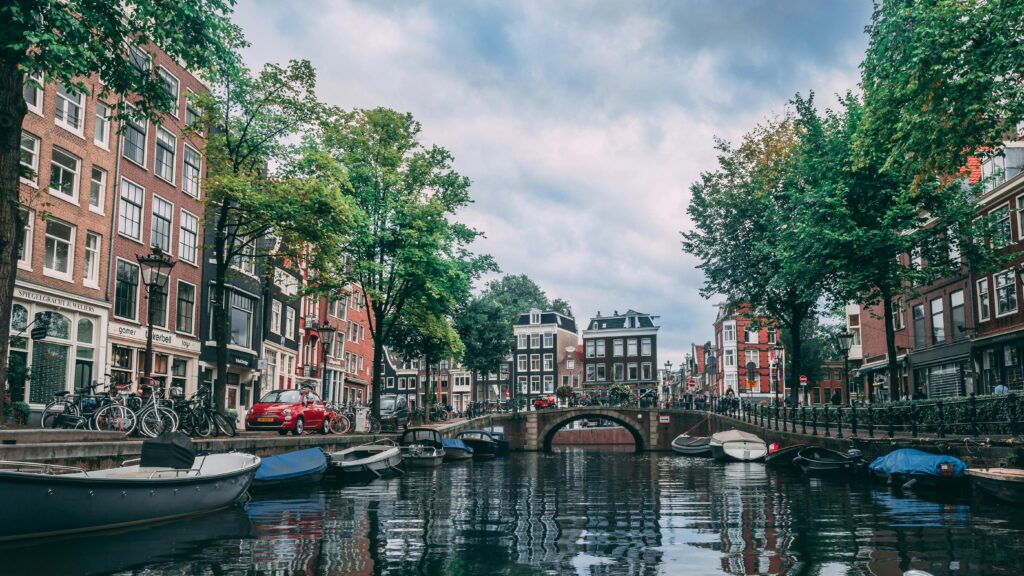25 Best Things to Do in Barcelona
Barcelona, the vibrant capital of Catalonia, in Spain, is a city where history meets modernity in the most captivating way. Founded by the Romans, its rich past is evident in the diverse architecture and the unique character of each neighborhood. The bustling streets and lively plazas brim with cultural energy, offering a constant feast for the senses as you explore the city’s evolution from ancient times to the present.
The city’s coastal location adds a refreshing charm, with the Mediterranean Sea providing a stunning backdrop to its urban landscape. Barcelona’s renowned culinary scene showcases a delicious mix of traditional and innovative flavors, reflecting its cultural diversity. The energetic atmosphere is palpable, whether you’re enjoying a local festival, an impromptu street performance, or savoring the city’s vibrant nightlife. Every corner of Barcelona exudes a blend of history, culture, and contemporary living, making it a truly unforgettable destination.
These are the 25 best things to do in Barcelona:
1. Sagrada Familia
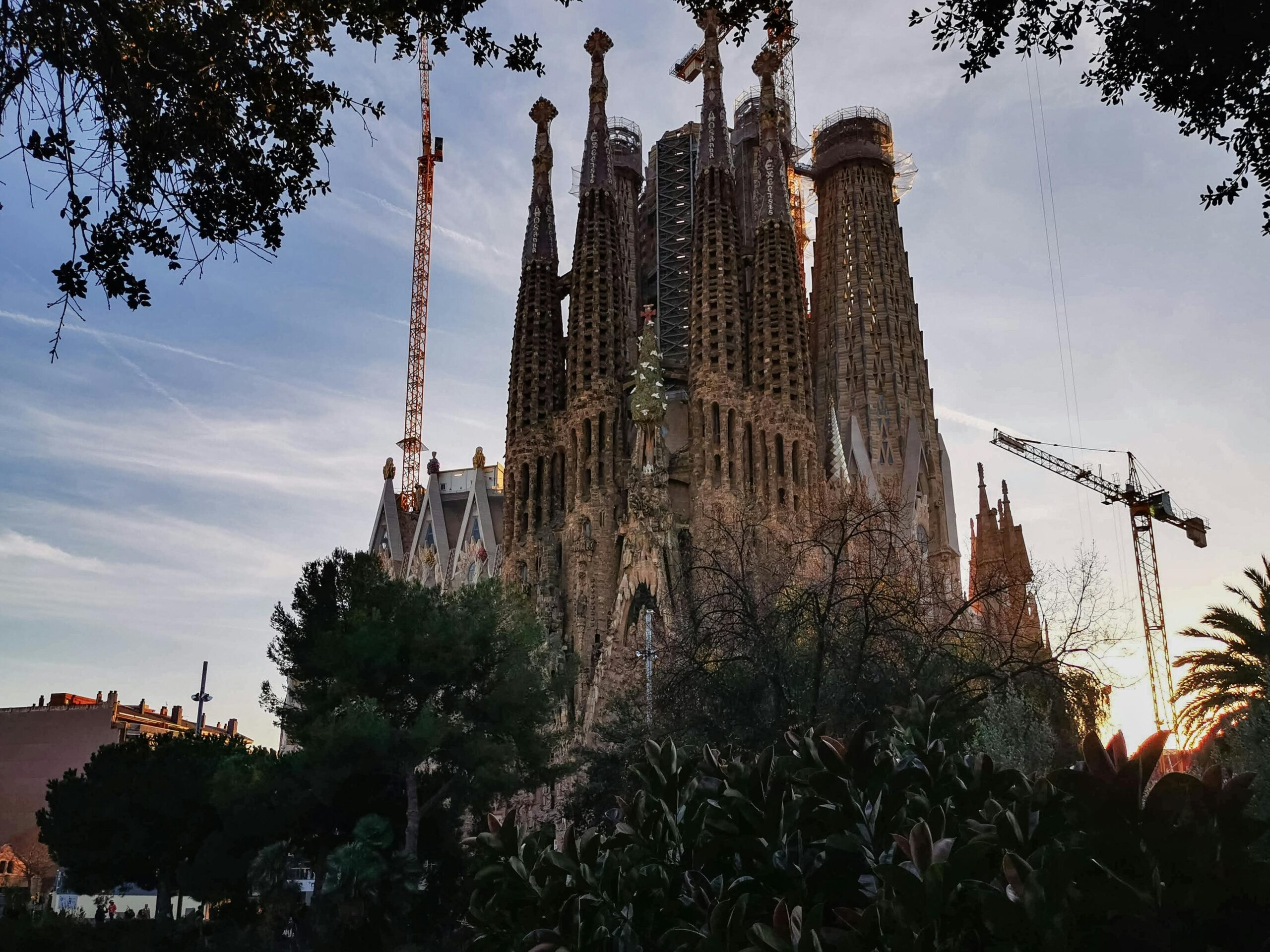
One of the best things to do in Barcelona is to visit the Sagrada Familia, a stunning basilica designed by the renowned architect Antoni Gaudí. Construction began in 1882 and remains ongoing, making it a unique blend of historical significance and modern craftsmanship. This architectural marvel features intricate facades, towering spires, and awe-inspiring interiors, reflecting Gaudí’s distinctive style and dedication to natural forms. As one of the most iconic landmarks in Spain, the Sagrada Familia captivates visitors with its breathtaking beauty and complex history.
The basilica’s Nativity and Passion facades tell the story of Christ’s life, while the stunning stained glass windows fill the interior with a kaleidoscope of colors. Gaudí’s visionary work, combining Gothic and Art Nouveau styles, creates an unforgettable experience. Visitors can also learn about the basilica’s ongoing construction and Gaudí’s original plans, making it a living testament to Spain’s rich cultural and architectural heritage.
Details
Address: Eixample, 08013 Barcelona
Price: General Admission: €26; Under 30yo: €24.
Opening hours:
- November through February: Monday to Saturday from 9:00 am to 6:00 pm. Sundays from 10:30 am to 6:00 pm.
- March and October: Monday to Friday from 9:00 am to 7:00 pm. Saturdays from 9:00 am to 6:00 pm. Sundays from 10:30 am to 7:00 pm.
- April through September: Monday to Friday from 9:00 am to 8:00 pm. Saturdays from 9:00 am to 6:00 pm. Sundays from 10:30 am to 8:00 pm.
2. Casa Batlló
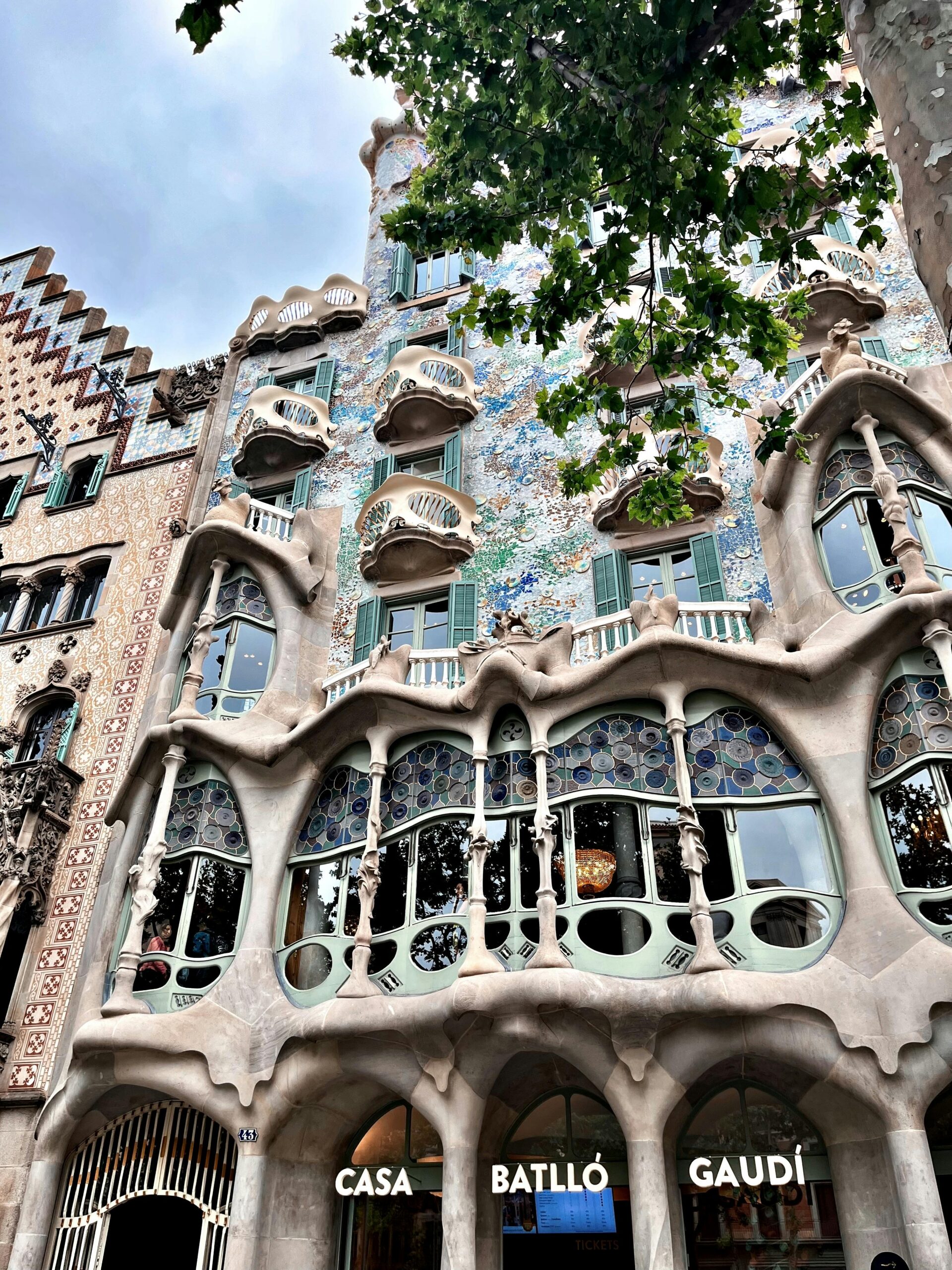
Casa Batlló is a captivating masterpiece by the legendary architect Antoni Gaudí. This UNESCO World Heritage site, crafted between 1904 and 1906, is a vivid example of Catalan modernism, captivating visitors with its undulating facade and vibrant colors. Gaudí’s genius shines through in every detail, from the whimsical roof that resembles a dragon’s back to the exquisite mosaic tiles that glisten in the Mediterranean sun.
Once inside, visitors are transported to a world where imagination meets innovation. The interiors are a kaleidoscope of organic shapes and natural light, designed to evoke the depths of the sea and the hues of marine life. One can’t help but marvel at the fluidity of the spaces, where even the smallest details reflect Gaudí’s deep connection to nature. Exploring Casa Batlló is undeniably one of the best things to do in Barcelona, offering a glimpse into the artistic soul of this vibrant city and a testament to Gaudí’s enduring influence on modern architecture.
Details
Address: Pg. de Gràcia, 43, L’Eixample, 08007 Barcelona
Price: General Admission: €29; Students: €23; Children 13yo-17yo: €23; Children 0yo-12yo: €0.
Opening hours: Open 9 am – 10 pm daily.
3. Park Güell
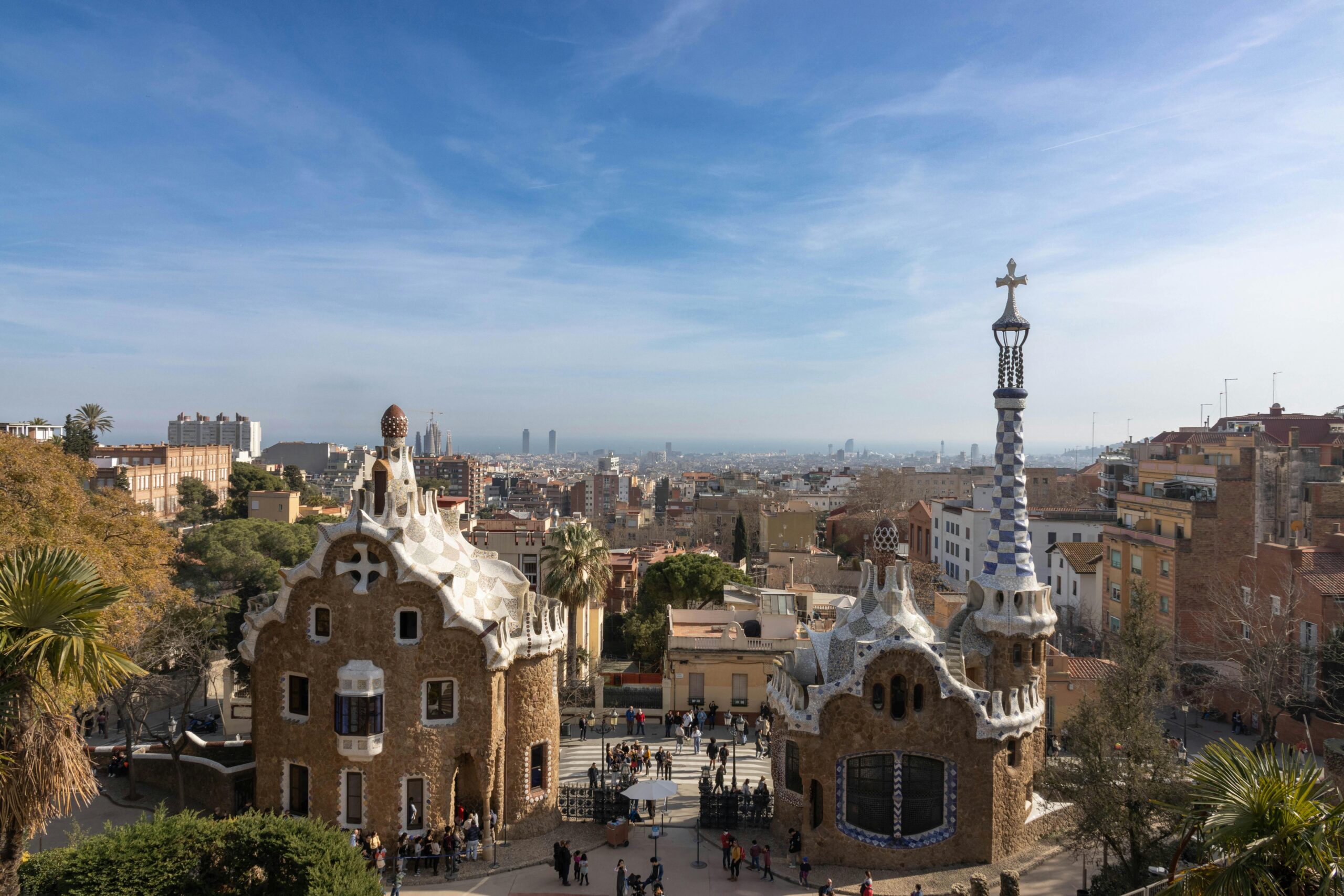
Barcelona’s Park Güell stands as a testament to Antoni Gaudí’s creative genius and Catalonia’s rich architectural heritage. This whimsical park offers visitors a surreal journey through a blend of natural beauty and artistic innovation. Designed initially as a housing project by Gaudí and Eusebi Güell, the park now entices millions with its mosaic-covered structures, vibrant tiled benches, and panoramic views of Barcelona. Completed in 1914, it was designated a UNESCO World Heritage site in 1984, preserving its cultural and historical significance.
Exploring Park Güell reveals not just stunning vistas of Barcelona but also insights into Gaudí’s avant-garde vision. The iconic dragon fountain at the entrance, adorned with colorful ceramic tiles, greets guests with its mythical charm. As you wander through the park’s pathways, the serpentine Bench of Trencadís beckons, offering a mosaic masterpiece crafted from broken ceramic shards. For architecture enthusiasts, the Gaudí House Museum provides a deeper context into the maestro’s life and work. Whether admiring the intricate details of the Hypostyle Room or simply savoring the tranquil gardens, capturing the essence of Spain’s artistic prowess and cultural allure.
Details
Address: Gràcia, 08024 Barcelona
Price: General Admission: €10; Children 7yo-12yo: €7; Children 0yo-6yo: €0.
Opening hours: Open 9:30 am – 7:30 pm daily.
4. National Museum of Art of Catalunya
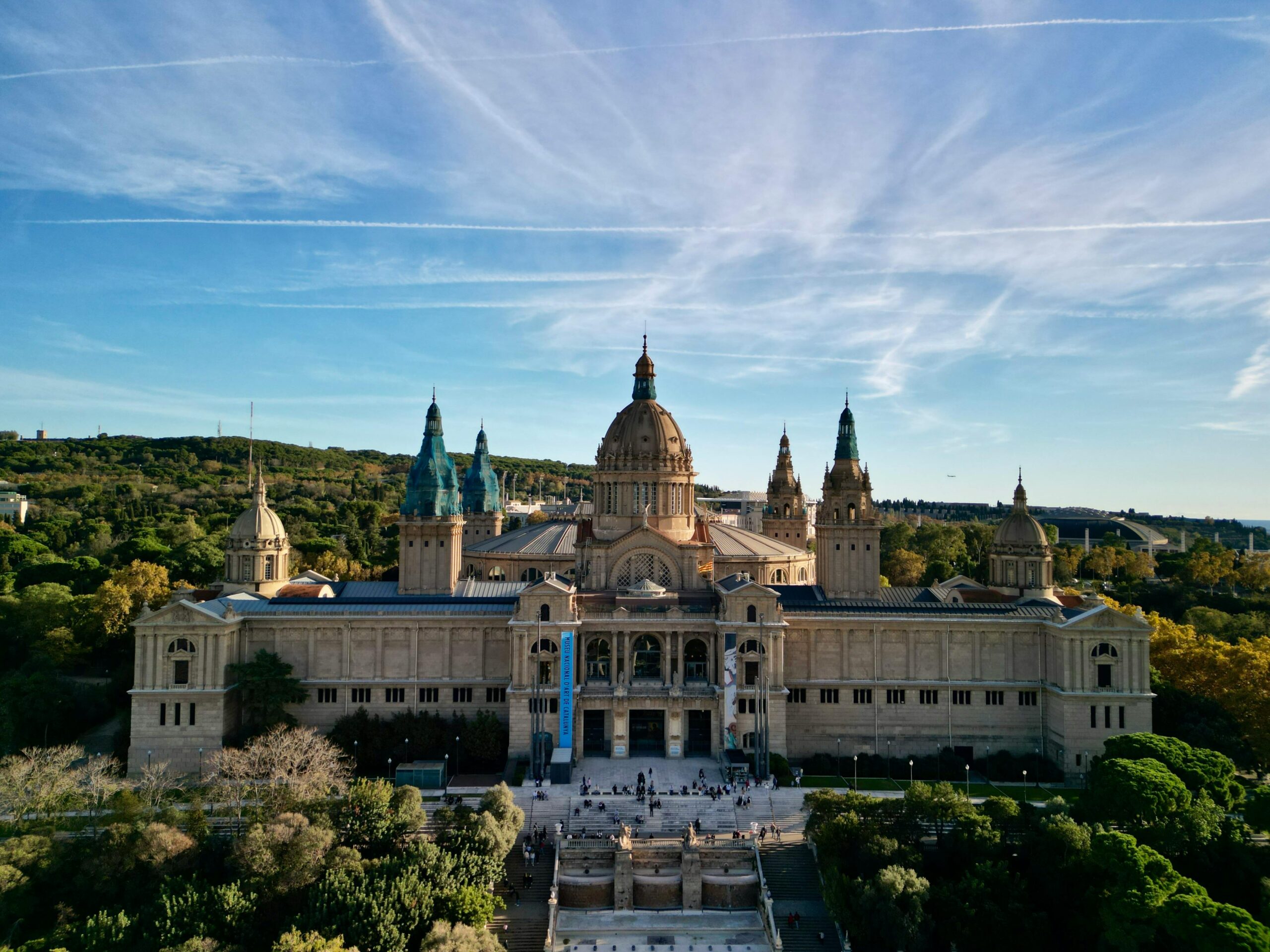
The National Museum of Art of Catalunya in Barcelona stands as a beacon of Catalan heritage and artistic expression. Housed in the grand Palau Nacional, perched atop Montjuïc hill, this museum offers a breathtaking panorama of Barcelona. Inside, its collection spans over a thousand years of Catalan art, from Romanesque frescoes to modernist masterpieces by Gaudí and his contemporaries. One of the best things to do here is to marvel at the vast Romanesque collection, a testament to Catalonia’s medieval past. These artworks, rescued from remote churches across the region, depict scenes of faith and daily life, revealing a glimpse into Catalonia’s rich historical tapestry.
Beyond its art, MNAC‘s setting itself is a historical marvel, constructed for the 1929 International Exposition. Its grand staircase and dome reflect the proud Catalan Renaissance, a period of cultural resurgence. Today, visitors can explore not just paintings but also sculptures, decorative arts, and photography, each offering a deeper understanding of Catalonia’s evolving identity within Spain.
Details
Address: Palau Nacional, Parc de Montjuïc, s/n, Sants-Montjuïc, 08038 Barcelona
Price: General Admission: €12; Family discount: €8.40; Seniors and under 16yo: €0; Students: €8.40; Youth Card: €6.
Opening hours:
- Winter opening times: October to April, Tuesday to Saturday, 10 am to 6 pm; Sundays and public holidays, 10 am to 3 pm.
- Summer opening times: May to September, Tuesday to Saturday, 10 am to 8 pm; Sundays and public holidays, 10 am to 3 pm.
- Mondays are closed, except for public holidays.
5. Magic Fountain
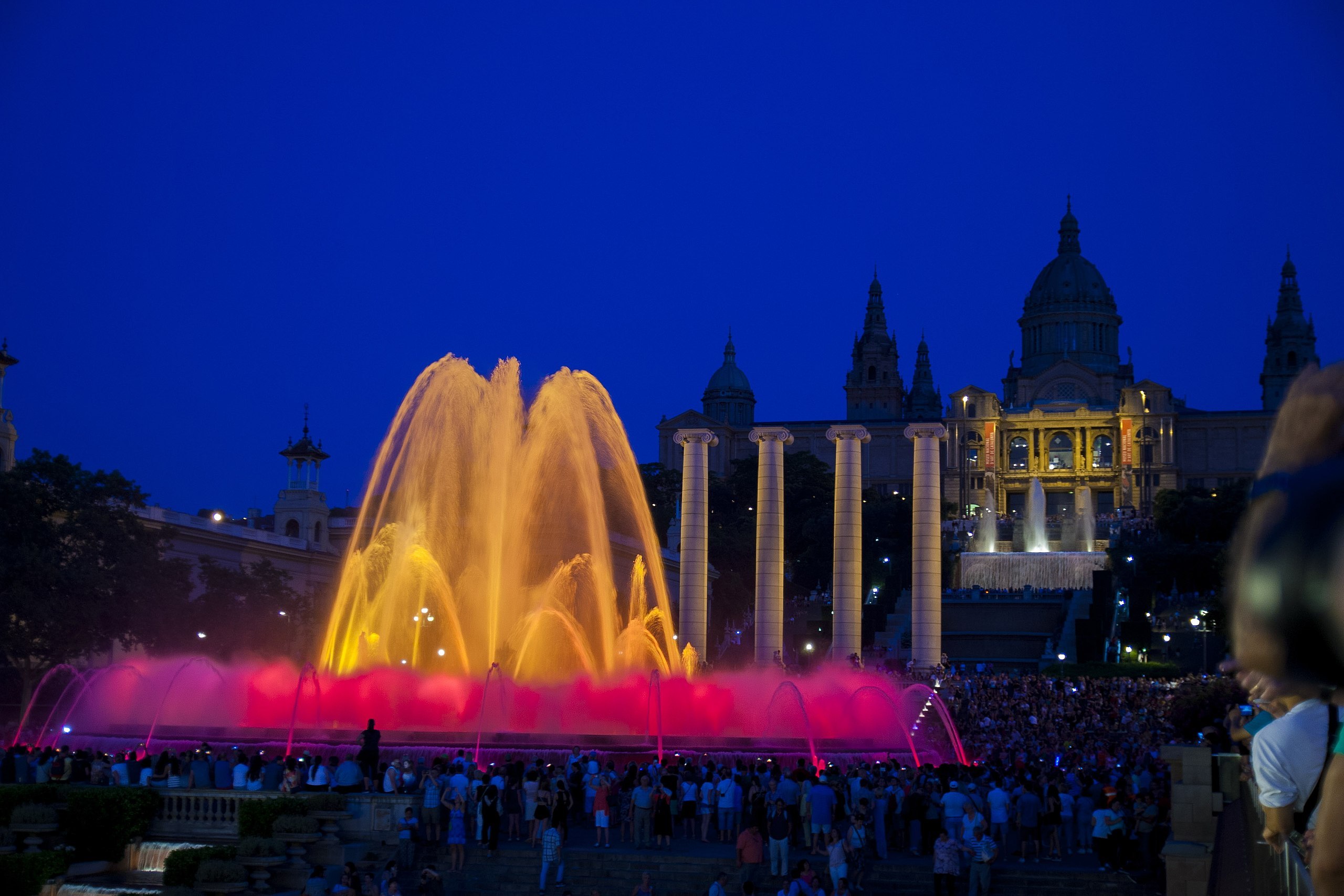
Barcelona’s Magic Fountain is a mesmerizing spectacle that enchants visitors from around the globe. Located at the base of Montjuïc mountain, this iconic landmark showcases a captivating display of light, color, and water choreography. Built-in 1929 for the International Exposition, the fountain’s historical significance adds to its allure, drawing crowds seeking both entertainment and cultural enrichment.
At nightfall, the Magic Fountain comes alive with a choreographed performance set to music, a symphony of water jets dancing gracefully amidst a backdrop of illuminated buildings. It’s no wonder this is often listed among the best things to do in Barcelona, offering a blend of artistry and history that captures the essence of Spain’s vibrant culture. Families, couples, and solo travelers alike gather to witness this dazzling show, making it a must-see attraction for anyone visiting the city. Whether you’re admiring its architectural splendor during the day or attending an evening spectacle, Barcelona’s Magic Fountain promises an unforgettable experience that celebrates the city’s rich heritage and artistic flair.
Details
Address: Pl. de Carles Buïgas, Sants-Montjuïc, 08038 Barcelona
6. Picasso Museum
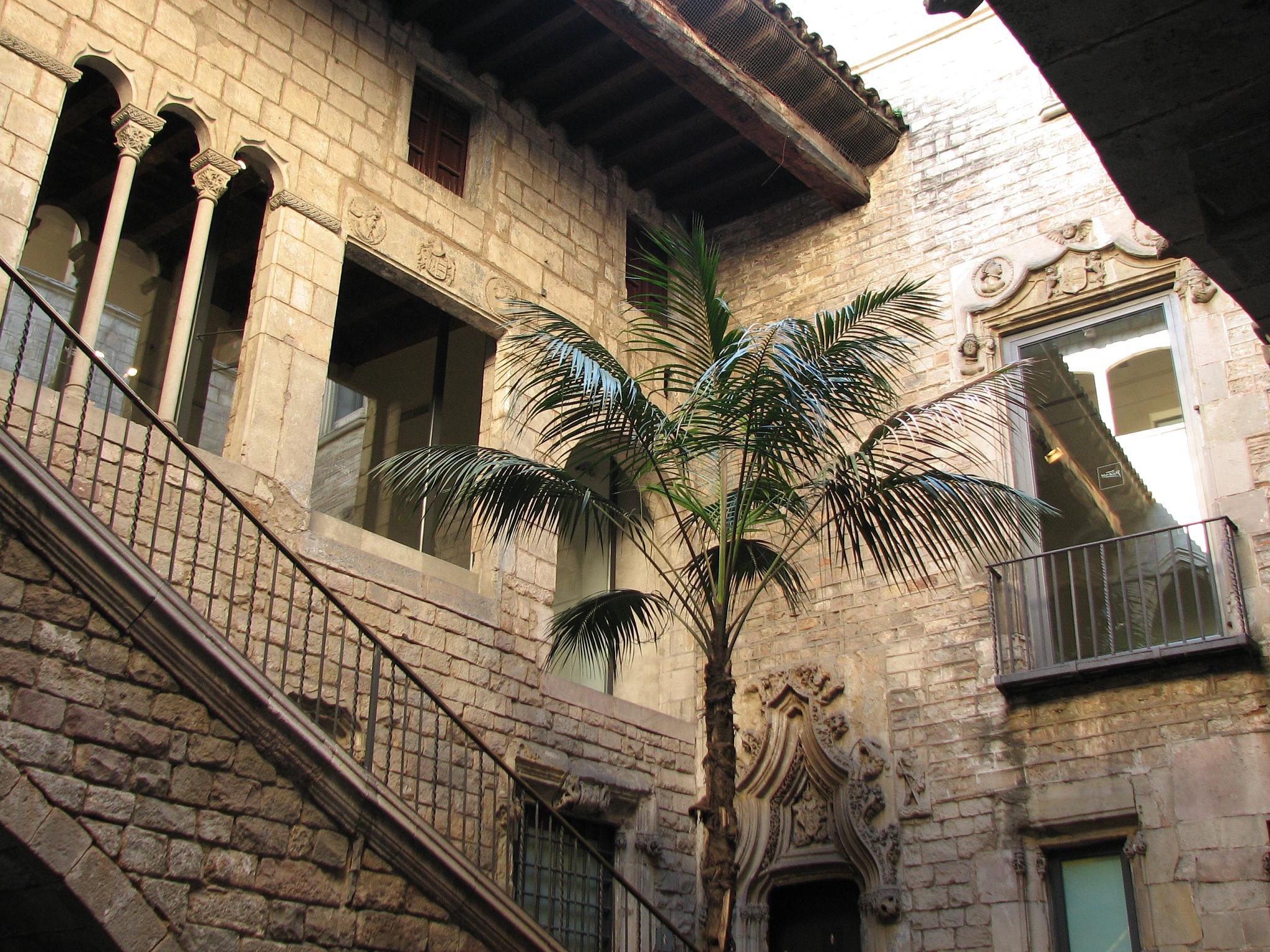
In the heart of Barcelona, tucked away in the labyrinthine streets of the El Born district, lies the mesmerizing Picasso Museum. This cultural gem showcases over 4,000 works that span the prolific career of Pablo Picasso, from his early sketches to iconic masterpieces. Housed in five interconnected medieval palaces, the museum itself is a work of art, blending Gothic and Catalan architecture seamlessly.
The collection offers a profound insight into Picasso’s evolution as an artist, with highlights including his groundbreaking Blue Period and Cubist creations. Each room unveils a different facet of his genius, illustrating his deep connection to Barcelona, where he spent his formative years. Visitors can marvel at iconic pieces like ‘Harlequin’ and ‘Woman with Hat,’ which capture Picasso’s revolutionary approach to art. For art enthusiasts and history buffs alike, a visit to the Picasso Museum is undoubtedly one of the best things to do in Barcelona, offering a tangible journey through Spain’s rich artistic heritage.
Details
Address: C/ de Montcada, 15-23, Ciutat Vella, 08003 Barcelona
Price: General Complete Admission: €15; Adults 18yo-25yo: €7.50; Seniors: €7.50; Under 18yo: €0; Free on specific schedules*.
Opening hours:
- From May 2 to October 31: Tuesday, Wednesday, and Sunday from 9 am to 8 pm.
Thursday, Friday, and Saturday from 9 am to 9 pm. - From November 1 to April 30: Tuesday to Sunday from 10 am to 7 pm.
- Mondays are closed.
- Free Schedule*:
- On the first Sunday of each month (reservation required).
- The “Open days”: February 11, May 18, and September 24 (reservation required).
- From November 1 to April 30: Thursdays from 4 pm to 7 pm (reservation required)
- From May 2 to October 31: Thursdays, Fridays, and Saturdays from 7 pm to 9 pm (reservation required)
7. Parc de la Ciutadella
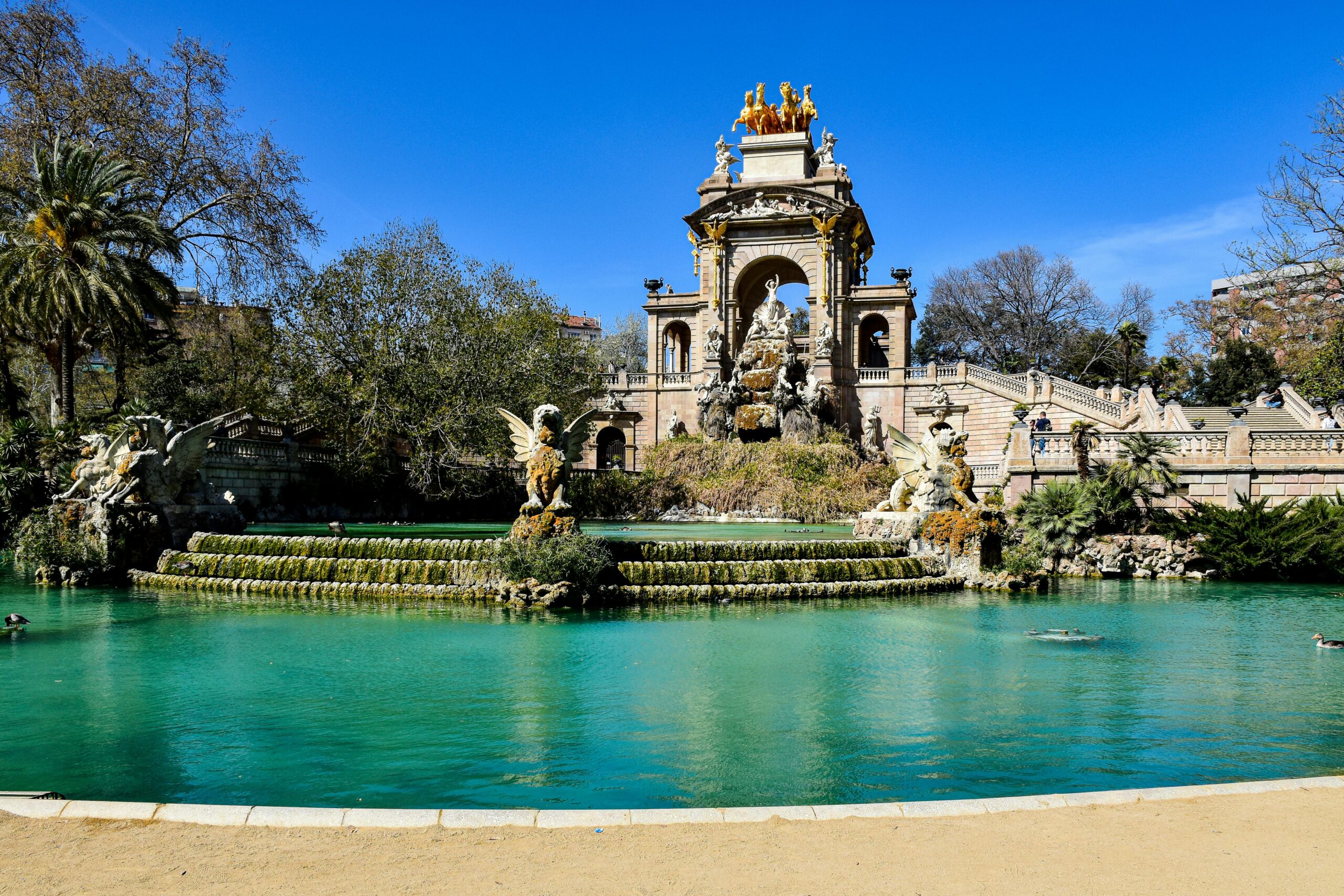
Barcelona’s Parc de la Ciutadella, a tranquil oasis in the heart of the bustling city, invites visitors to unwind amid lush greenery and iconic landmarks. Originally built in the 19th century on the site of a former military citadel, this sprawling park is steeped in history. Its centerpiece, the Cascada Monumental, designed by Josep Fontsére with the help of a young Antoni Gaudí, mesmerizes with its intricate sculptures and cascading waters—a homage to the city’s resilience and creative spirit.
Strolling through Parc de la Ciutadella, one discovers a blend of recreational spaces and cultural treasures. Locals and tourists alike flock here to row boats on the serene lake, picnic under shady palms, or explore the zoo. The park’s role has evolved over the decades, from a military stronghold to a symbol of Barcelona’s commitment to green spaces and community leisure. Today, it stands as a testament to the city’s past, offering a peaceful retreat where history, nature, and relaxation harmoniously converge in the vibrant tapestry of Barcelona.
8. Casa Milà
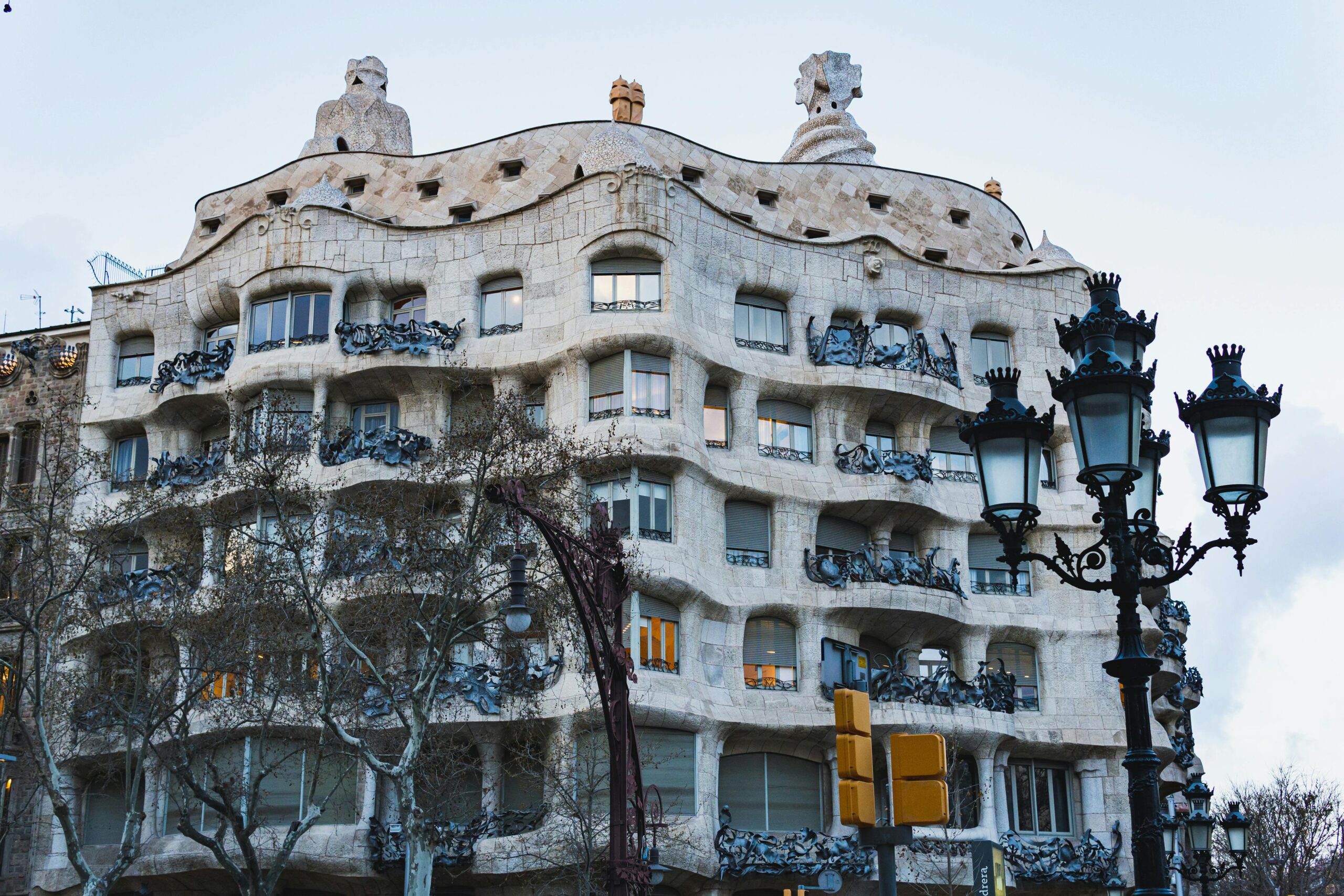
Barcelona’s Casa Milà, also known as La Pedrera, stands as a testament to Antoni Gaudí‘s genius in architectural design. Constructed between 1906 and 1912, this unconventional building draws visitors with its undulating stone facade and surreal rooftop sculptures that seem to defy gravity. Gaudí, a key figure of Catalan Modernism, envisioned Casa Milà not just as a residential edifice but as a work of art integrated with nature. Its interior, with its organic shapes and natural light filtering through twisting corridors, offers a glimpse into the artist’s profound connection with Catalonia’s landscapes and culture.
Today, Casa Milà remains one of Barcelona’s most visited attractions, captivating tourists with its unique blend of artistry and functionality. The rooftop, adorned with chimneys resembling medieval knights, offers panoramic views of Barcelona’s skyline. Beyond its aesthetic appeal, Casa Milà also serves as a historical landmark, reflecting the socio-economic climate of early 20th-century Spain. Its UNESCO World Heritage status underscores its significance not just as a building, but as a cultural icon that continues to inspire architects and artists worldwide.
Details
Address: Pg. de Gràcia, 92, L’Eixample, 08008 Barcelona
Price: General Admission: €28; Children 12yo-17yo: €12.50; Seniors and Students: €19; Children 0yo-12yo: €0.
Opening hours:
- Summer schedule:
- 4 March 2024 – 1 November 2024: From Monday to Sunday, and holidays: 9:00 am – 8:30 pm
- Winter schedule:
- 2 November 2023 – 3 March 2025: From Monday to Sunday, and holidays: 9:00 am – 6:30 pm
9. Gràcia Neighborhood
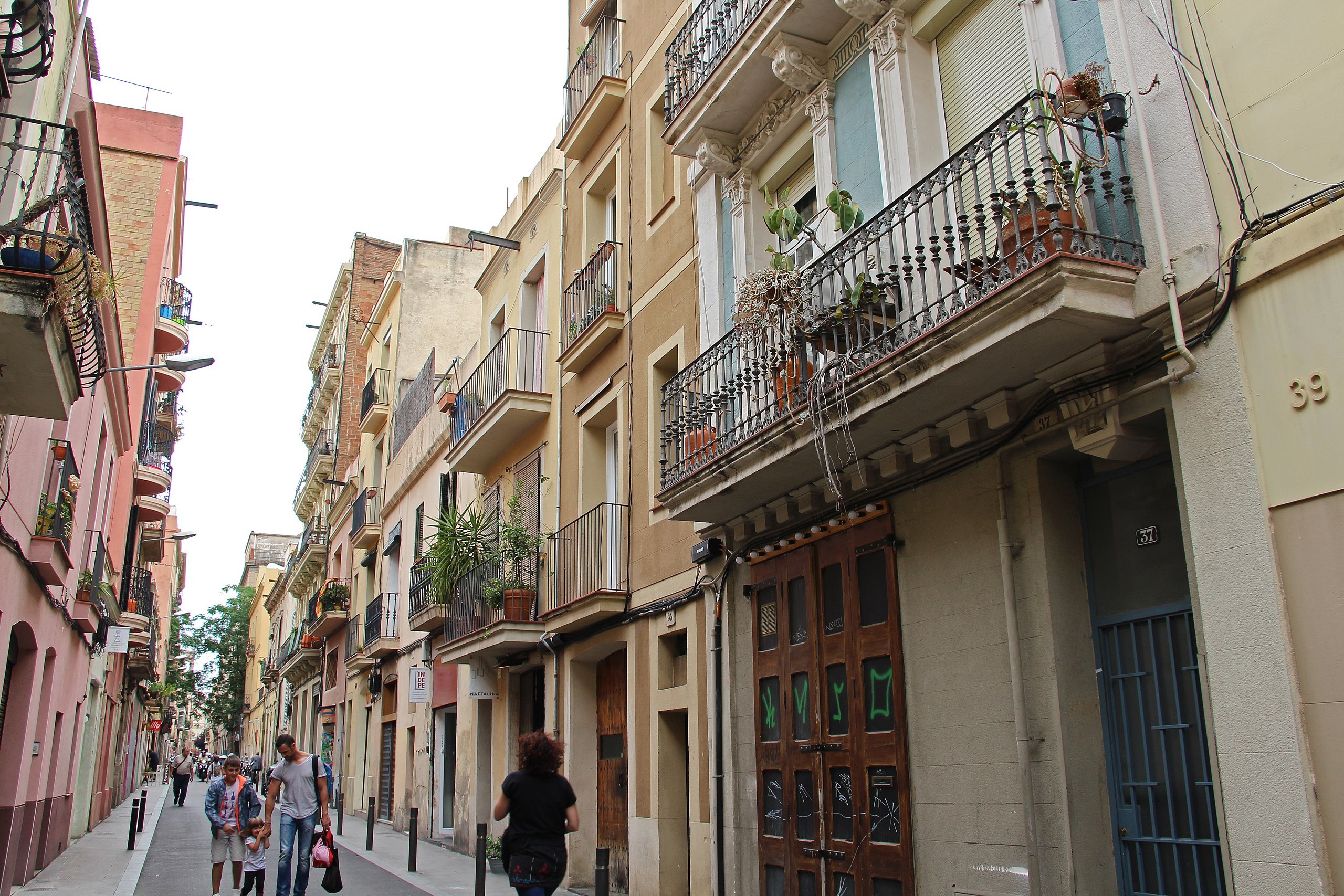
Gràcia, Barcelona’s charismatic neighborhood that effortlessly blends historical charm with vibrant modernity. Once an independent village on the outskirts of Barcelona, Gràcia retains its distinct character despite being absorbed into the city in the late 19th century. Narrow streets adorned with colorful facades lead you through a maze of boutiques, cozy cafes, and lively squares where locals gather for leisurely chats. This enclave is famous for its annual Festa Major de Gràcia, a week-long festival where streets burst with elaborate decorations and lively festivities, showcasing the community’s creativity and spirit.
Exploring Gràcia unveils a treasure trove of experiences. Discover the local art scene at galleries tucked away in unexpected corners, or unwind in one of the many plazas shaded by leafy trees. Don’t miss strolling down Passeig de Gràcia, known for its upscale boutiques and iconic Gaudí architecture.
10. Barcelona Cathedral
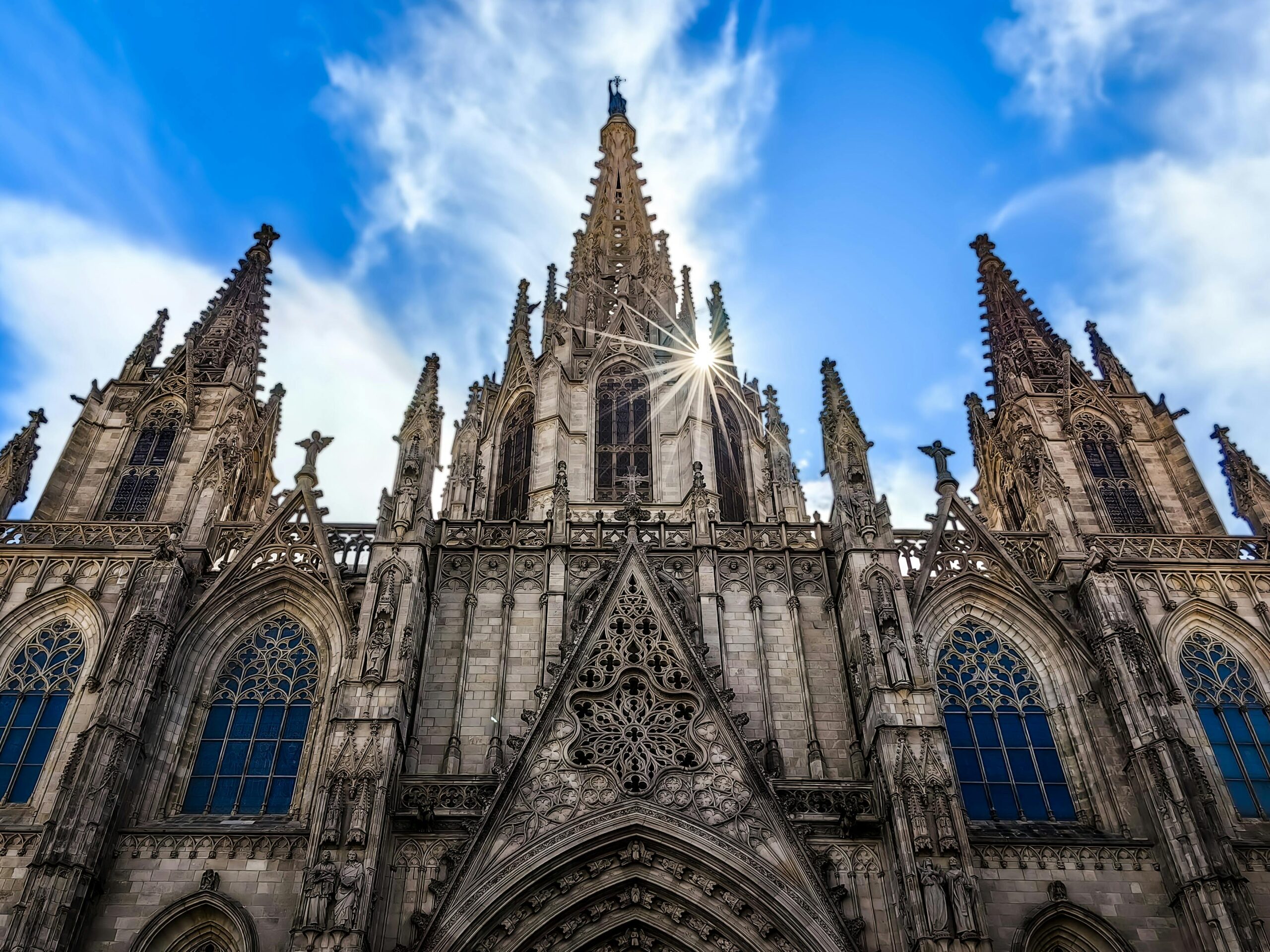
Barcelona’s Cathedral, officially known as the Cathedral of the Holy Cross and Saint Eulalia, stands proudly in the heart of Barcelona’s Gothic Quarter. This magnificent structure, built between the 13th and 15th centuries, is a testament to Catalonia’s rich architectural heritage. Its imposing facade features intricate Gothic details, while the spacious interior houses numerous chapels adorned with stunning religious art and sculptures. The cathedral’s cloister, a serene oasis with lush palm trees and a mesmerizing Gothic fountain, offers a peaceful escape from the bustling streets outside.
Visitors can go to the cathedral’s rooftop, where they are treated to panoramic views of the city and the Mediterranean Sea. The rooftop also provides a close-up look at the cathedral’s spires and gargoyles, each telling a story of its own. Dedicated to Saint Eulalia, a patron saint of Barcelona, the cathedral’s history intertwines with the city’s medieval past, making it not just a religious landmark but a symbol of Barcelona’s resilience and cultural identity.
Details
Address: Pla de la Seu, s/n, Ciutat Vella, 08002 Barcelona
Price: General Admission €14; Children 4yo-12yo: €6; Children 0yo-3yo: €0.
Opening hours:
- Weekdays: from 9:30 am – 6:30 pm.
- Saturdays and Festive Vigil (Religious): from 9:30 am – 5:15 pm.
- Sundays and Festive (Religious): from 2 pm – 5 pm.
11. La Rambla

In the heart of Barcelona, pulses the vibrant avenue known as La Rambla. Stretching from Plaça de Catalunya to the waterfront, this iconic boulevard is a bustling hub of activity and a true reflection of the city’s eclectic spirit. Lined with cafes, shops, and street performers, Las Ramblas offers a sensory feast where every step reveals something new. Historically, it was a watercourse that marked the city’s boundaries during medieval times. Today, it’s a magnet for tourists and locals alike, drawn by its unique charm and the variety of experiences it offers.
Walking La Rambla is one of the best things to do in Barcelona, offering a glimpse into the city’s rich cultural tapestry. Visitors can explore La Boqueria, a historic market dating back to the 13th century, where stalls burst with fresh produce and local delicacies. Alongside, the Gran Teatre del Liceu stands as a testament to Barcelona’s passion for opera and the arts. As you stroll, don’t miss the Miró mosaic—a homage to the famed Catalan artist—embedded in the pavement.
12. Montjuïc Cable Car
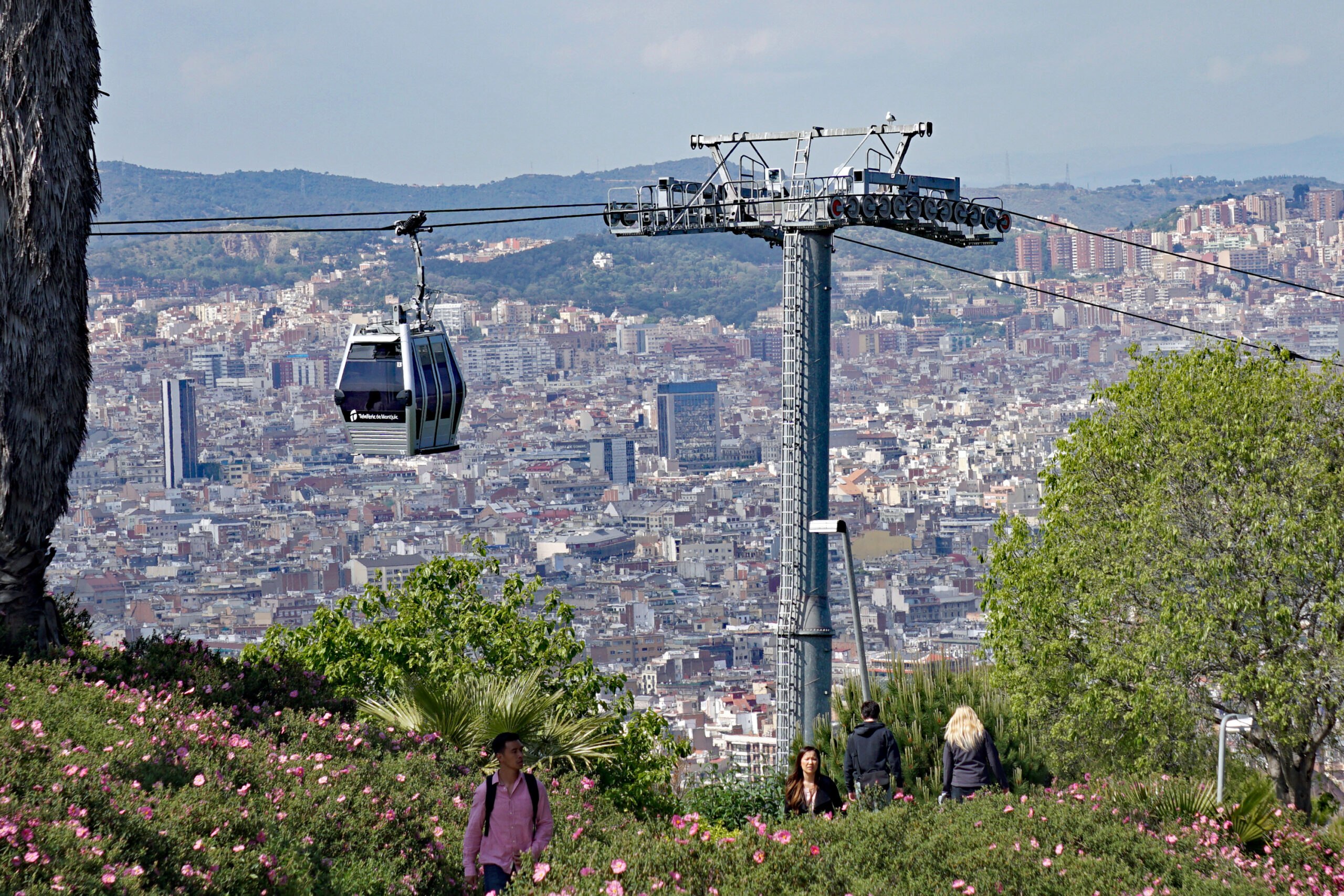
If you’re seeking one of Barcelona’s iconic experiences, look no further than the Montjuïc Cable Car. This aerial tramway offers a breathtaking journey from the city’s bustling port up to the historic Montjuïc Hill, where panoramic views of Barcelona and the Mediterranean await. Originally constructed for the 1929 International Exposition, it’s not just a mode of transport but a piece of living history. The cable car ride itself is a thrilling adventure, spanning over 750 meters and providing a bird’s-eye view of landmarks like the Miramar Gardens and the imposing Montjuïc Castle.
One of the best things to do in Barcelona, the Montjuïc Cable Car seamlessly blends leisure and history. As you glide above the city, you can trace the evolution of Barcelona from ancient times to the modern metropolis it is today. Each cabin offers a comfortable vantage point, perfect for capturing memorable photos of the cityscape below. Whether you’re a history buff or simply craving a unique perspective on Barcelona, this experience promises both wonder and insight into Spain’s rich cultural tapestry.
Details
Address: Avinguda Miramar, 30, Sants-Montjuïc, 08038 Barcelona
Price:
- Single:
- Adult: €10.50; Children 4yo-12yo: €8.50; Children under 4yo: €0.
- Return:
- Adult: €16; Children 4yo-12yo: €11.60; Children under 4yo: €0.
Opening hours:
- From January to February: from 10 am – 6 pm.
- From March to May: from 10 am – 7 pm.
- From June to September: from 10 am – 9 pm.
- October: from 10 am – 7 pm.
- From November to December: from 10 am – 6 pm.
13. Poble Espanyol
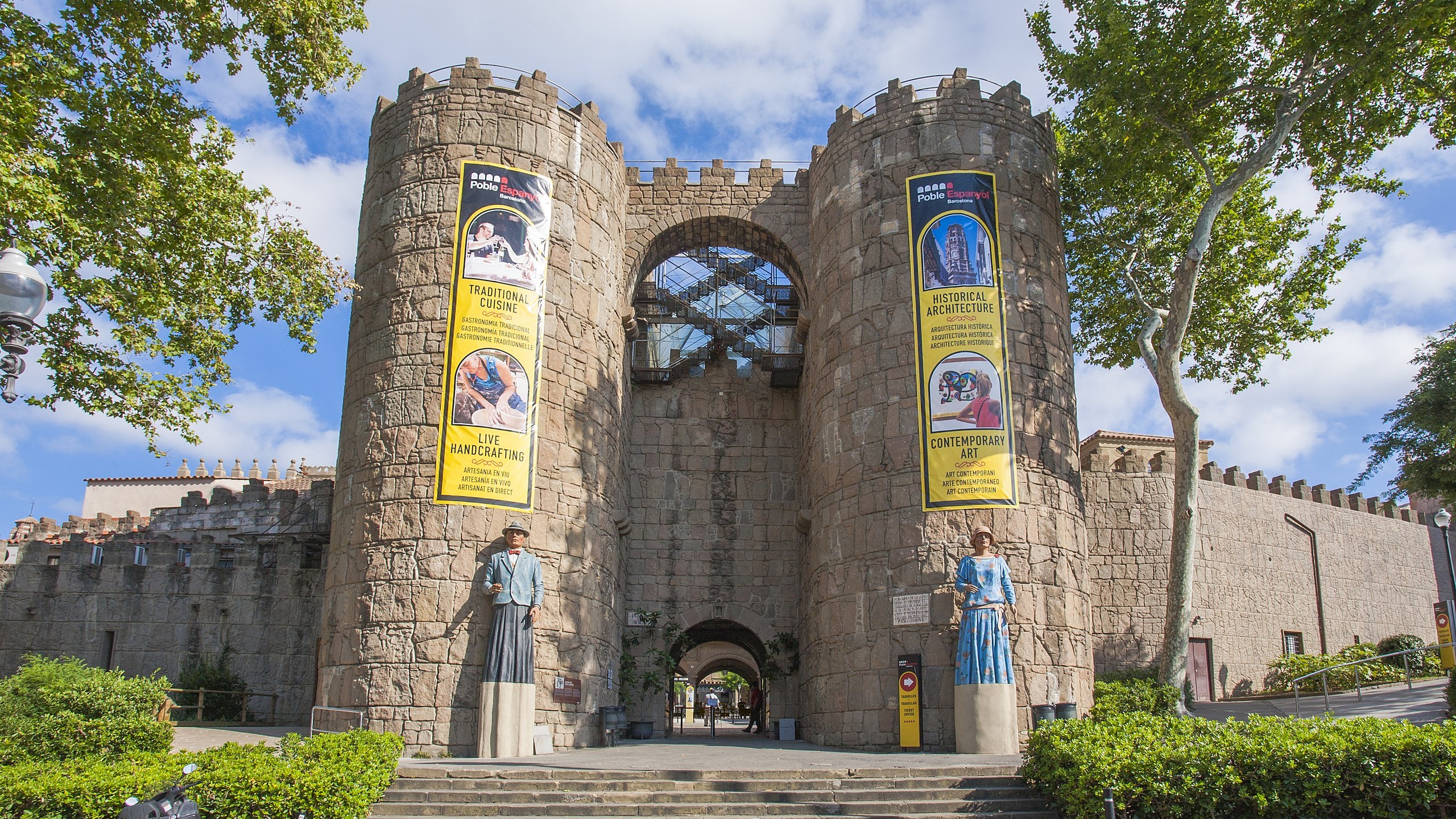
Poble Espanyol is a captivating open-air museum, showcasing Spain’s diverse architectural heritage. Built in 1929 for the International Exposition, this charming village-like enclave offers visitors a unique journey through Spain’s rich cultural tapestry. Wander its winding streets and discover replicas of iconic buildings from all over Spain, meticulously crafted to preserve the essence of each region’s architectural style.
One of the best things to do here is to explore its artisan workshops, where skilled craftsmen demonstrate traditional Spanish crafts like glassblowing, pottery, and textile weaving. This immersive experience not only brings history to life but also highlights Spain’s enduring artistic traditions. Beyond its historical allure, Poble Espanyol also hosts concerts, art exhibitions, and seasonal events, adding a dynamic flair to its cultural offerings. Whether you’re admiring the Catalan Modernism of Barcelona or the Moorish influences of Andalusia, Poble Espanyol promises a delightful blend of history, art, and Spanish charm right in the heart of this vibrant Mediterranean city.
Details
Address: Av. de Francesc Ferrer i Guàrdia, 13, Sants-Montjuïc, 08038 Barcelona
Price: General Admission €15; Children 4yo-12yo: €10; Under 4yo: €0; Students: €11.25.
Opening hours: Open Tuesday to Sunday from 10 am – 12 am. Open Monday from 10 am – 8 pm.
14. Plaça d’Espanya
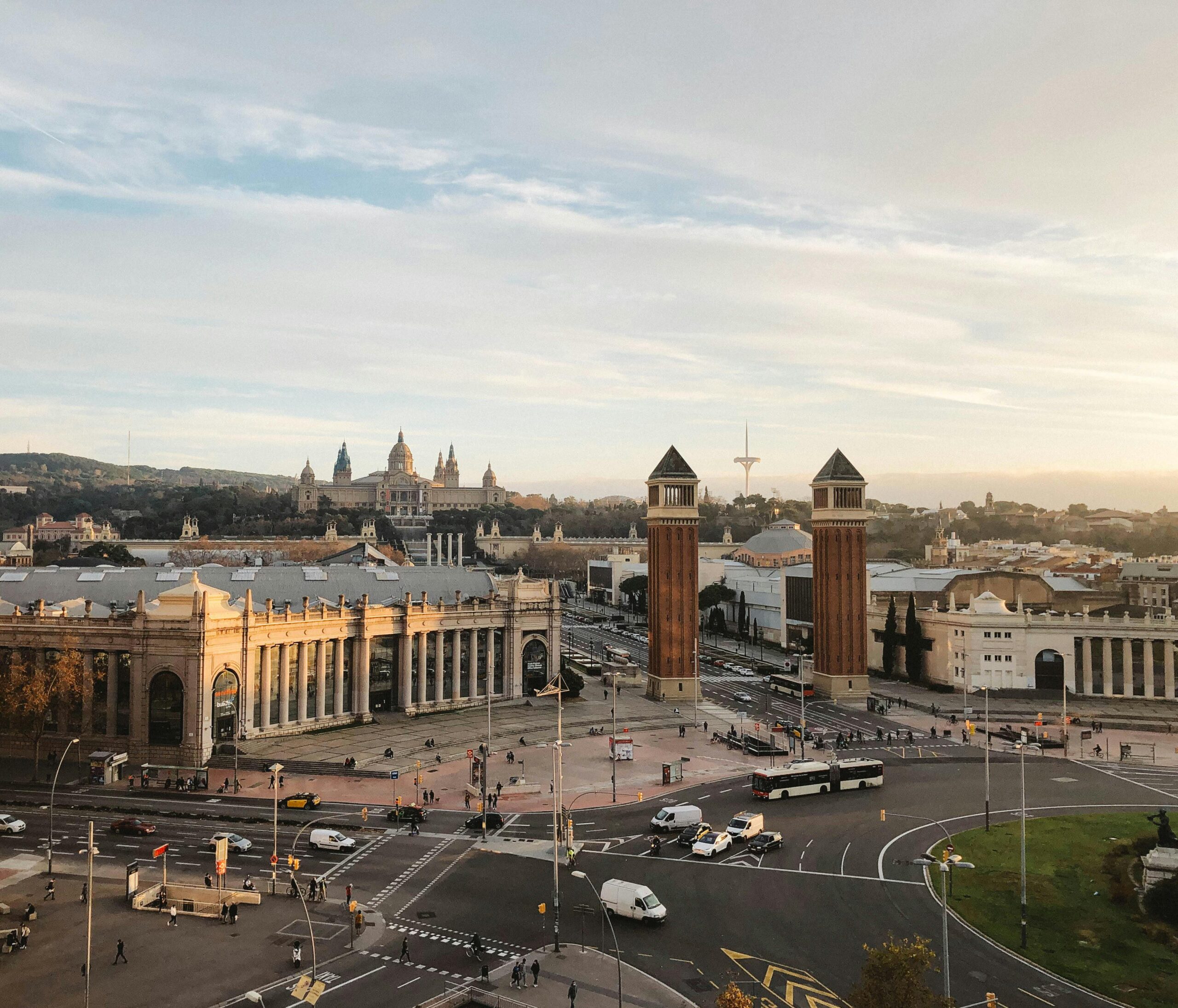
In the heart of Barcelona lies Plaça d’Espanya, a bustling hub that blends history with modernity. This expansive square is flanked by iconic landmarks, including the striking Venetian towers that stand guard over its bustling activity. Originally built for the 1929 International Exposition, Plaça d’Espanya remains a testament to Barcelona’s architectural prowess. The square’s focal point is the grand Magic Fountain, which mesmerizes visitors with its nightly water and light shows, a spectacle not to be missed.
Plaça d’Espanya isn’t just about its visual splendor; it offers some of the best things to do in Barcelona. History buffs can explore the nearby Arenas de Barcelona, once a bullring transformed into a shopping and entertainment complex with panoramic city views from its rooftop. Art aficionados will find joy in the nearby Joan Miró Foundation, showcasing the works of the famed Catalan artist. Whether you’re soaking in the sun by the fountain, shopping at Las Arenas, or delving into art at Miró’s museum, Plaça d’Espanya invites you to experience the vibrant soul of Barcelona, where past and present converge effortlessly in the heart of Spain’s most enchanting city.
Details
Address: Sants-Montjuïc, 08004 Barcelona
15. Plaça de Catalunya
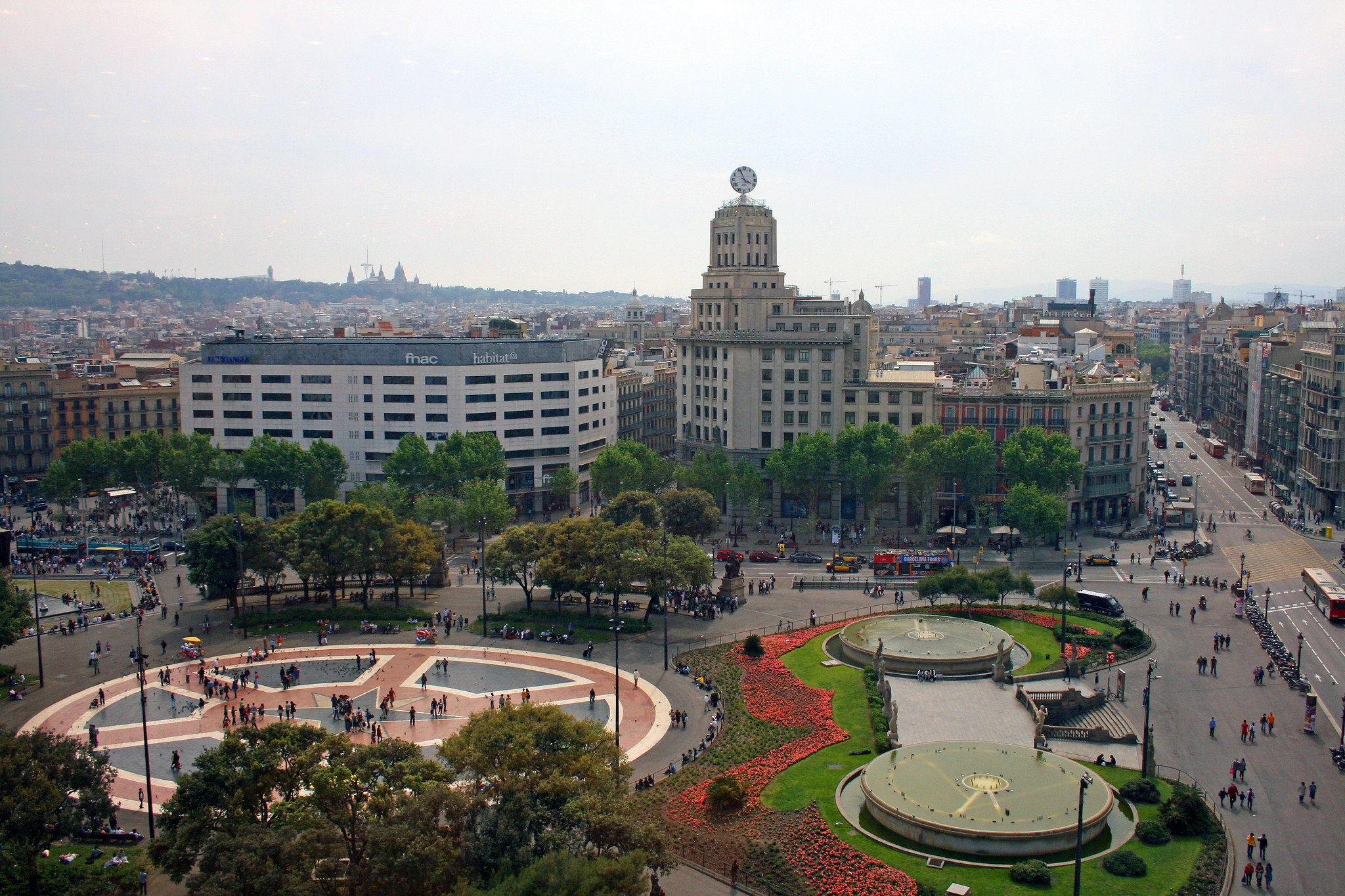
Barcelona’s Plaça de Catalunya is the beating heart of the city, a bustling square that seamlessly blends history with modern vitality. Located at the junction of the old town and the newer Eixample district, it serves as a symbolic meeting point for locals and tourists alike. Historically, the square has witnessed significant events, from political rallies during the Spanish Civil War to festive celebrations marking Barcelona’s cultural heritage.
Surrounded by grand buildings and adorned with intricate statues and fountains, Plaça de Catalunya invites visitors to linger and soak in its atmosphere. It’s not just a transit hub but a place where the pulse of Barcelona can truly be felt. Locals often gather here to relax on benches shaded by leafy trees or to admire the striking sculptures that dot the square. Shopping enthusiasts will find themselves at the gateway to Barcelona’s prime retail streets, making it a perfect starting point to explore the city’s vibrant shopping scene.
Details
16. Mount Tibidabo

Overlooking the vibrant cityscape of Barcelona, Mount Tibidabo stands as a timeless icon. Its summit, at 512 meters, not only offers breathtaking panoramic views but also houses the historic Temple Expiatori del Sagrat Cor, a stunning church completed in 1961. This architectural marvel, crowned with a towering statue of Christ, adds a majestic touch to the skyline. Tibidabo isn’t just about views; it’s a playground of experiences. One of the best things to do here is to ride the iconic Tibidabo funicular, a century-old railway that gently ascends the mountain, offering a nostalgic journey through time.
Beyond its religious and scenic allure, Mount Tibidabo boasts an amusement park that’s one of Barcelona’s oldest, dating back to 1905. This park blends vintage rides with modern thrills, making it a magnet for families and thrill-seekers alike. History buffs will appreciate Tibidabo’s origins, rooted in Roman times when it was known as Mount Jupiter. Today, it remains a testament to Barcelona’s rich cultural tapestry, inviting visitors to explore its natural beauty and diverse attractions.
17. Arc de Triomf

Standing tall amidst the vibrant streets of Barcelona, Spain, the Arc de Triomf is a striking symbol of the city’s rich history and architectural grandeur. Built as the main entrance for the 1888 Barcelona World Fair, this majestic monument blends Moorish and Neomudéjar styles, showcasing intricate details and a warm terracotta hue that glows under the Mediterranean sun.
As you approach, the arch’s ornate façade and intricate carvings draw you in, inviting you to explore its historical significance. Beyond its stunning aesthetics, the Arc de Triomf serves as a gateway to Ciutadella Park, where locals and tourists alike gather for picnics, strolls, and cultural events. Whether admiring the arc from afar or walking beneath its towering arches, it remains a must-see attraction in Barcelona, offering a glimpse into the city’s past while seamlessly integrating into its present-day charm.
Details
Address: Ciutat Vella, 08018 Barcelona
18. Barceloneta Beach
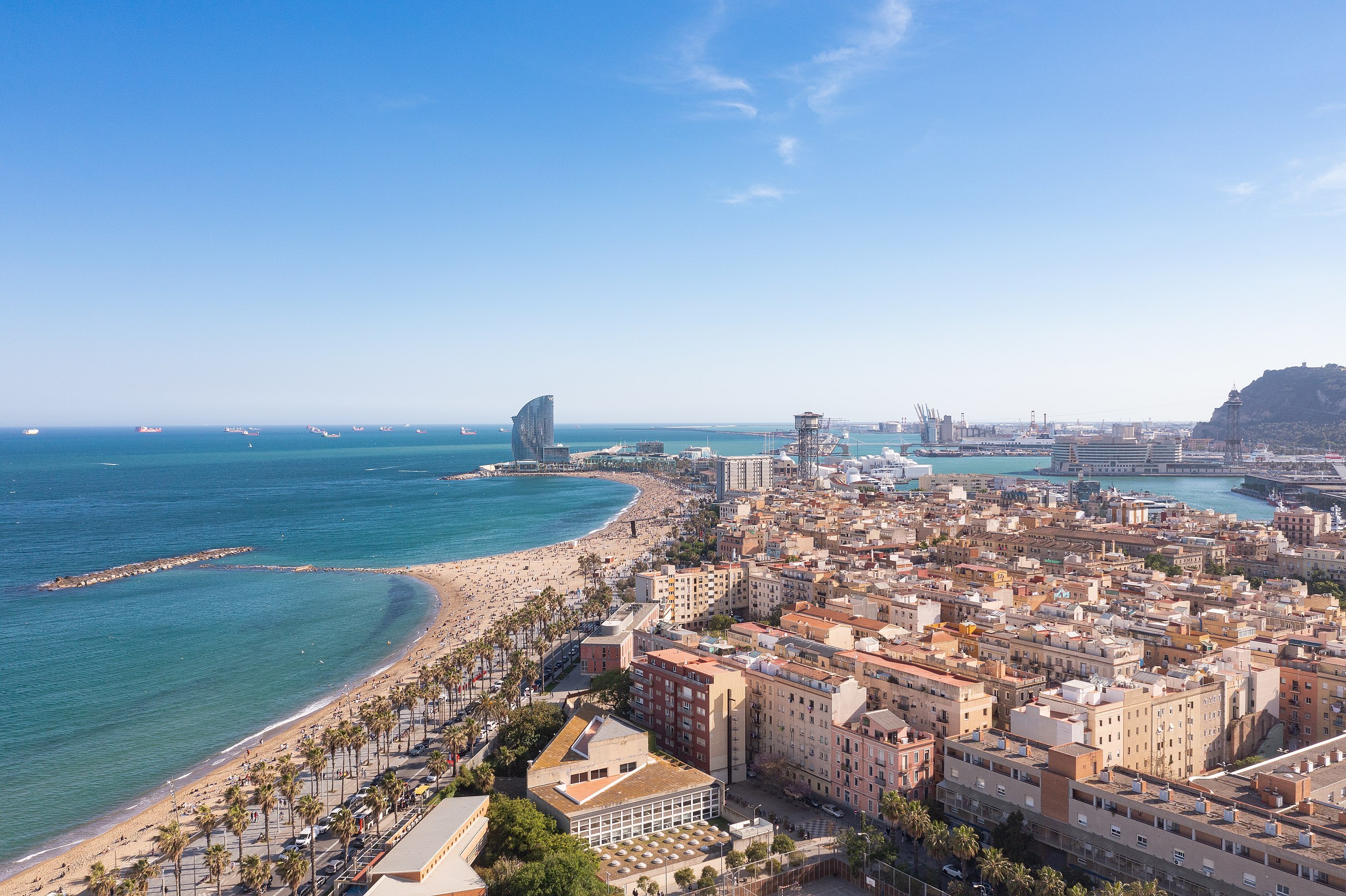
Barcelona’s Barceloneta Beach is an iconic stretch of sand that embodies the city’s vibrant seaside culture. Located just minutes from the bustling city center, this beach beckons both locals and tourists alike with its golden shores and lively atmosphere. Originally developed in the 18th century as part of Barcelona’s urban expansion project, it has since become a beloved escape for sun-seekers and water enthusiasts.
The beach offers a myriad of activities, making it one of the best things to do in Barcelona. From leisurely sunbathing and refreshing dips in the Mediterranean Sea to beach volleyball and windsurfing, there’s something for everyone. Along the promenade, you’ll find an array of seafood restaurants and bars serving up fresh catches and cool beverages. Don’t miss the chance to stroll along the Passeig Marítim, lined with palm trees and sculptures, offering stunning views of the sea and the city skyline. Whether you’re catching waves or simply people-watching, Barceloneta Beach captures the essence of Spain’s coastal charm right in the heart of Barcelona.
19. La Boquería Market
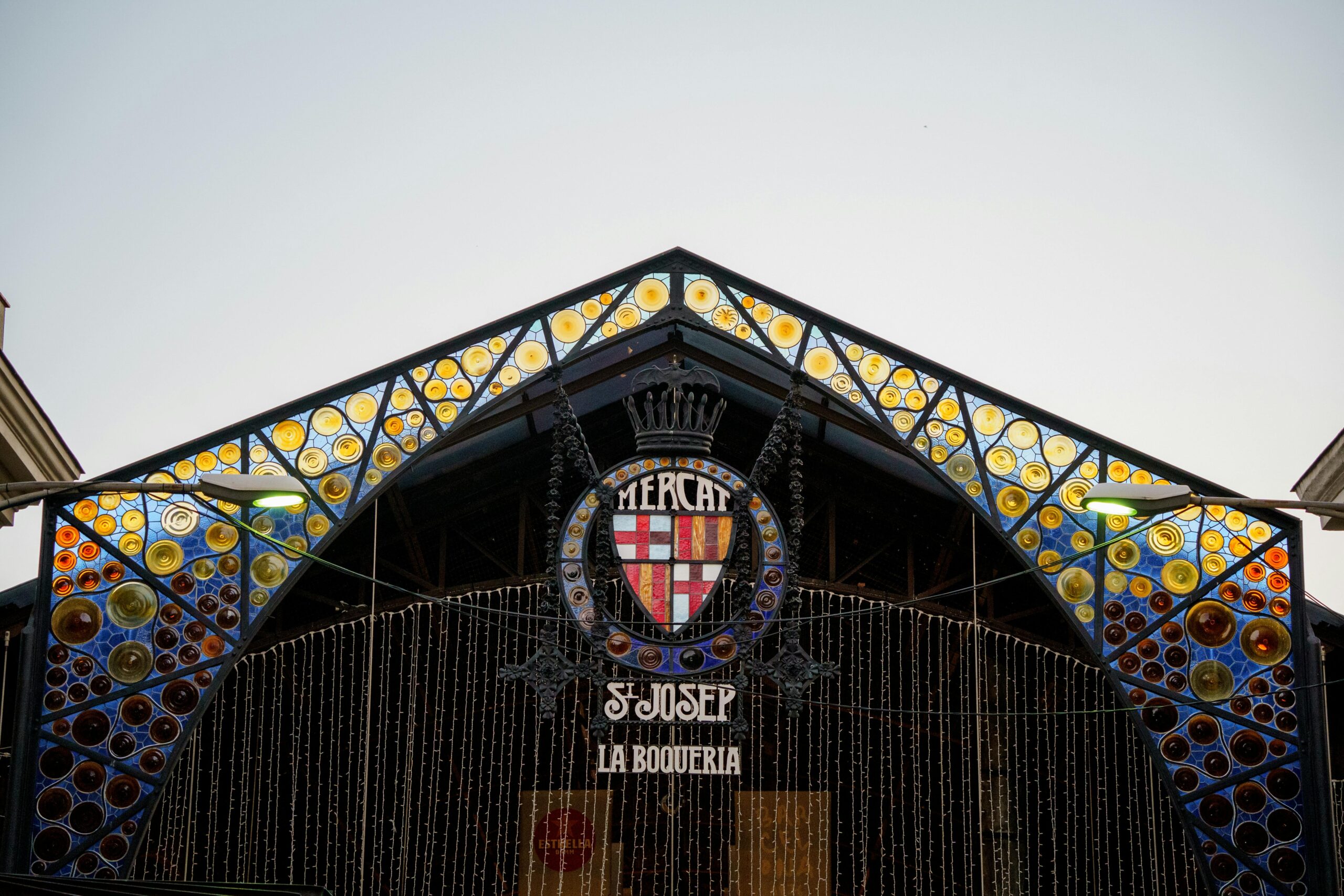
In the heart of Barcelona, lies the vibrant La Boquería Market, a sensory feast that has been enchanting visitors for centuries. This bustling marketplace dates back to the 13th century when it began as a humble street market near the old city gate. Over time, it evolved into a labyrinthine space where locals and tourists converge to experience some of the city’s freshest produce, meats, and seafood.
Strolling through La Boquería feels like stepping into a kaleidoscope of colors and aromas. Towering stands brim with ripe fruits, from crimson pomegranates to golden pineapples, while seafood vendors proudly display glistening catches from the nearby Mediterranean. It’s not just about shopping here; it’s an immersive cultural experience. Locals banter in Catalan, offering tastes of jamón ibérico and manchego cheese, creating an atmosphere that’s as lively as it is authentic.
Details
Address: La Rambla, 91, Ciutat Vella, 08001 Barcelona
Opening hours: Open Monday to Saturday from 8 am – 8:30 pm.
20. Botanical Garden of Barcelona
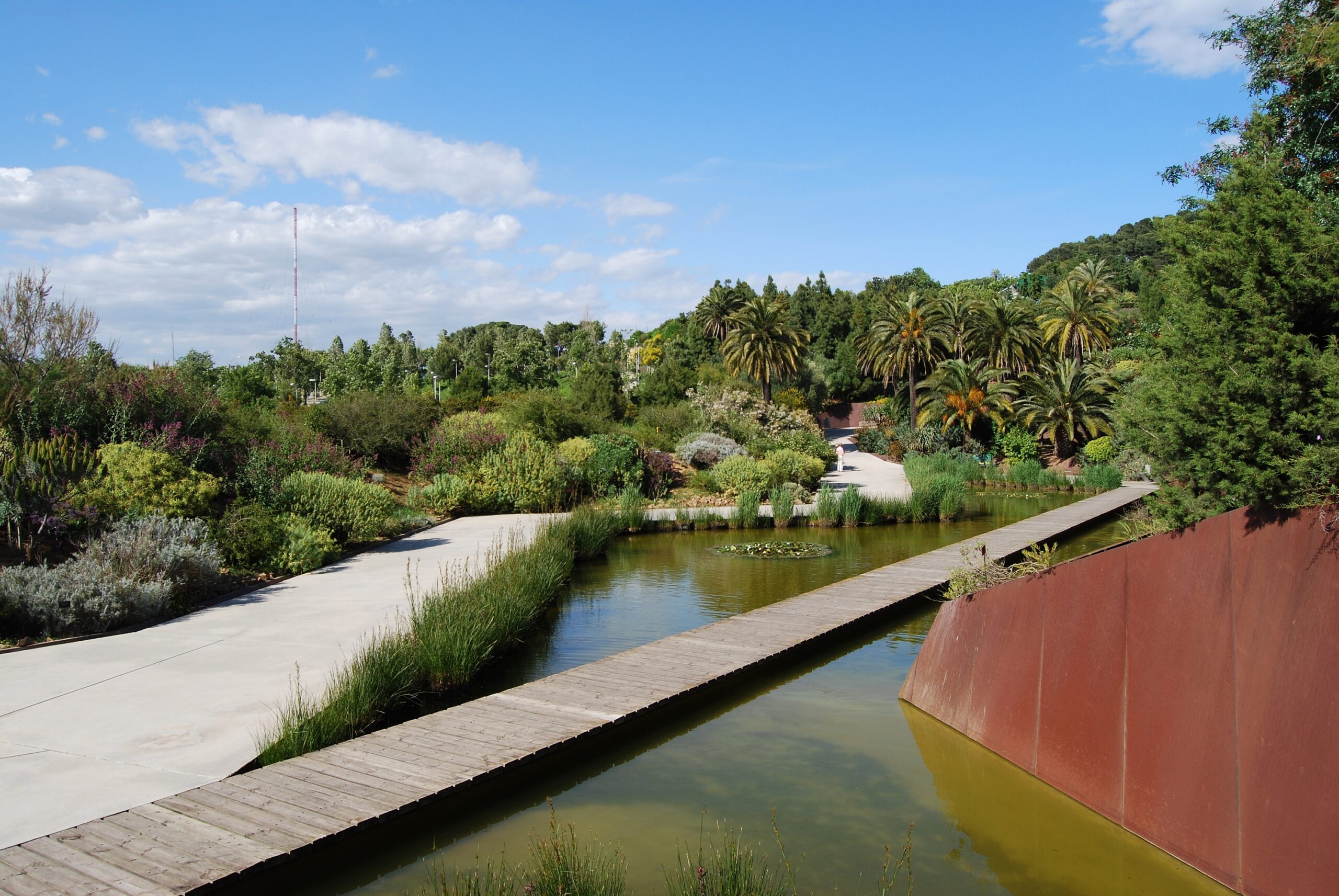
In the heart of Barcelona lies a verdant gem, the Botanical Garden of Barcelona. This lush sanctuary, established in 1999, spans 14 hectares and showcases an impressive array of Mediterranean flora. What makes this garden truly unique is its focus on plants native to the Mediterranean Basin, a region known for its rich biodiversity and historical significance. Strolling through its meticulously curated sections, visitors encounter over 1,500 species, each telling a story of adaptation and resilience in Spain’s diverse landscapes.
A standout feature of the Barcelona Botanical Garden is its thematic areas, meticulously designed to represent different geographical zones. From the Canary Islands to the Pyrenees, each section not only delights the senses but also educates about the ecological diversity of Spain. For nature enthusiasts, it ranks among the best things to do in Barcelona, offering a peaceful retreat from the bustling city streets. Whether you’re admiring centuries-old olive trees or learning about indigenous herbs used since Roman times, this botanical haven promises both tranquility and discovery amidst Barcelona’s urban charm.
Details
Address: C/ Dr. Font i Quer, 2, Sants-Montjuïc, 08038 Barcelona
Price: General Admission €7.50; Reduced Ticket: €3.50; First Sunday of every month is Free.
Opening hours:
- November, December, January: from 10 am – 5 pm.
- February, March: from 10 am – 6 pm.
- April, May, September, October: from 10 am – 7 pm.
- June, July, August: from 10 am – 8 pm.
21. Palau de la Música Catalana

The Palau de la Música Catalana in Barcelona stands as a crowning jewel of Catalan modernism, a testament to the city’s artistic fervor. Constructed in the early 20th century by the visionary architect Lluís Domènech i Montaner, its façade is a mosaic masterpiece of intricate designs and vibrant colors. Step inside, and you’re transported into a world where light dances through stained glass windows, illuminating the grandeur of the concert hall. Its acoustics are renowned worldwide, drawing musicians and audiences alike to revel in its sublime soundscapes.
Originally built to promote Catalan choral music, the Palau has evolved into a cultural hub hosting concerts that span genres and eras. From classical symphonies to contemporary performances, every note resonates within the ornate walls adorned with sculptures of muses and floral motifs. The venue’s historical significance is palpable, having survived political turbulence and emerged as a symbol of Catalan identity and resilience. Visiting here ranks among the best things to do in Barcelona, offering a musical experience and a glimpse into the soul of Spain’s Catalan region, where passion for art and culture flourishes against a backdrop of rich history.
Details
Address: C/ Palau de la Música, 4-6, Ciutat Vella, 08003 Barcelona
Price: General Admission €18; Seniors and Under 10yo: €0.
Opening hours: Open 9 am – 3:30 pm.
22. Sant Pau Recinte Modernista
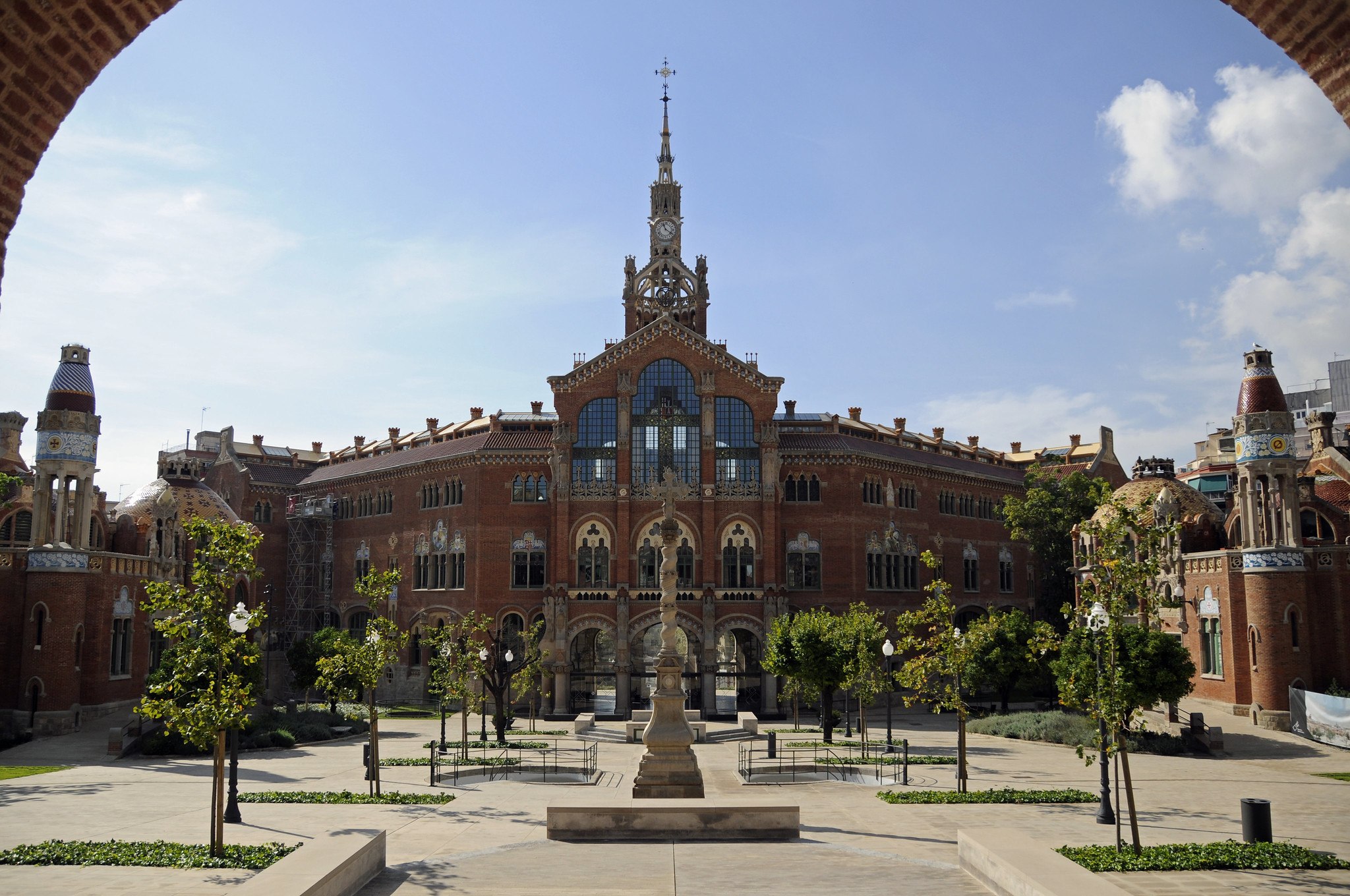
In the heart of Barcelona, lies the Sant Pau Recinte Modernista, a marvel of architectural brilliance and historical significance. Designed by the Catalan modernist architect Lluís Domènech i Montaner, this site served as a hospital for over a century before being transformed into a cultural and tourist attraction. Its intricate mosaic facades and whimsical towers stand as a testament to the city’s rich artistic heritage during the early 20th century.
Visitors to Barcelona seeking the best things to do should not miss exploring this UNESCO-listed site, which boasts not only stunning architecture but also a fascinating journey through the history of medicine in Spain. The sprawling complex, with its lush gardens and airy pavilions, offers a tranquil retreat from the bustling city streets. Each building tells a story, from its inception in 1902 to its modern-day role as a center for cultural events and exhibitions. Whether you’re a history buff or appreciate beautiful design, Sant Pau Recinte Modernista promises a captivating experience that captures the essence of Barcelona’s artistic and architectural prowess.
Details
Address: C/ de St. Antoni Maria Claret, 167, Horta-Guinardó, 08025 Barcelona
Price: General Admission €17; 12yo-24yo & 65yo+: €11.90; Under 12yo: €0.
Opening hours: Open November to March: 10 am – 5 pm. Open April to October: 10 am – 6:30 pm.
23. Montjuïc Castle

Perched on a dramatic hill overlooking Barcelona, Montjuïc Castle stands as a historic sentinel with stories etched into its ancient walls. Originally built in the 17th century, it has served not only as a fortress defending the city but also as a symbol of resilience through turbulent times in Spanish history. From its strategic vantage point, visitors can soak in breathtaking panoramic views of Barcelona’s skyline and the shimmering Mediterranean beyond.
One of the best things to do here is to explore its rich history, which includes its use as a military prison during the Spanish Civil War. Walking through the castle grounds feels like stepping back in time, with each stone telling a tale of conquests and conquests thwarted. The castle’s role has evolved over centuries, from a defense stronghold to a cultural hub hosting exhibitions and events.
Details
Address: Ctra. de Montjuïc, 66, Sants-Montjuïc, 08038 Barcelona
Price: General Admission €12; Reduced Ticket: €8; Under 8yo: €0; Free every Sunday from 3 pm and every first Sunday of the month.
Opening hours: From March 1 to October 31 from 10 am – 8 pm. From November 1 to February 28 from 10 am – 6 pm.
24. Fundació Joan Miró

Barcelona’s Fundació Joan Miró is a vibrant cultural gem nestled atop Montjuïc hill, offering one of the best things to do for art aficionados visiting Spain. Dedicated to the avant-garde works of Joan Miró, the museum showcases over 14,000 pieces, including paintings, sculptures, and tapestries that span his illustrious career. Founded in 1975, Miró himself envisioned this space to celebrate modern art’s playful and surreal essence. The building itself, designed by Josep Lluís Sert, mirrors Miró’s artistic philosophy with its open, airy galleries and panoramic views of Barcelona’s skyline.
Visitors can explore Miró’s evolution as an artist through iconic pieces like “Woman and Bird” and “The Farm”, which reveal his deep ties to Catalan culture and his innovative approach to form and color. Beyond the exhibits, the museum’s outdoor terraces offer breathtaking vistas of Barcelona, adding a serene backdrop to Miró’s bold, whimsical creations. Whether you’re an art enthusiast or simply seeking a glimpse into Catalonia’s artistic heritage, Fundació Joan Miró promises an enriching experience that captures the essence of Barcelona’s artistic soul.
Details
Address: Parc de Montjuïc, s/n, Sants-Montjuïc, 08038 Barcelona
Price: General Admission €10; Students 15yo-30yo & Seniors 65yo+: €9; Under 14yo: €0.
Opening hours: Open Tuesday to Saturday from 10 am – 8 pm. Open Sunday from 10 am – 7 pm. Closed on Mondays.
25. Monastery of Pedralbes

In the tranquil outskirts of Barcelona lies the Monastery of Pedralbes, a hidden gem steeped in history and serenity. Founded in 1326 by Queen Elisenda de Montcada, wife of King James II of Aragon, this monastery served as a haven for the Poor Clare nuns for centuries. Its Gothic architecture, characterized by delicate arches and intricate rose windows, stands as a testament to Catalonia’s medieval past.
Visitors to the Monastery of Pedralbes can explore its rich heritage through well-preserved chapels, cloisters, and the impressive church, which still hosts religious services today. One of the best things to do here is to wander through the tranquil gardens, where ancient cypress trees whisper tales of the past. The monastery’s museum offers a glimpse into the nuns’ daily lives, showcasing religious art and artifacts dating back to its foundation.
Details
Address: Baixada del Monestir, 9, Les Corts, 08034 Barcelona
Price: General Admission €5; Under 30yo: €3.5; Seniors 65yo+: €3.5; Under 16yo: €0.
Opening hours:
- From 1st of October to 31st of March:
- Tuesday to Sunday from 10 am to 2 pm
- Saturdays and Sundays from 10 am to 5 pm ( Sundays after 3 pm admission is free)
- Holidays from 10 am to 2 pm
- From 1st of April to 30th September
- Tuesday to Friday from 10 am to 5 pm
- Saturdays from 10 am to 7 pm
- Sundays from 10 am to 8 pm (after 3 pm admission is free)
- Holidays from 10 am to 2 pm
Tips
- The 30 Best Cities to Visit in Spain: a list of all of the best cities in Spain to visit!
Thank you for reading our blog post!
